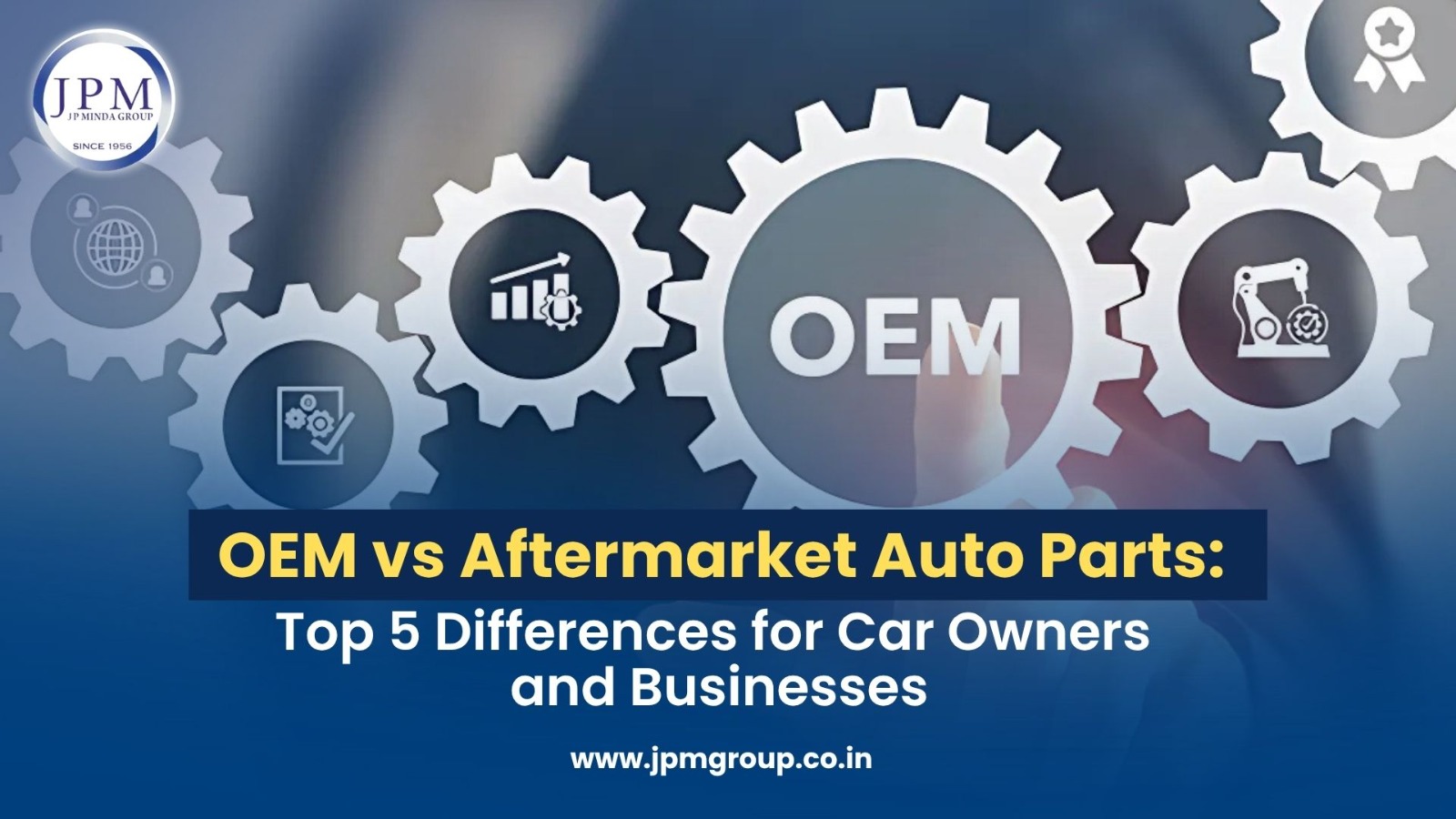Auto part have you ever had your mechanic ask, “Do you want OEM or aftermarket auto parts?” and you froze for a second? You’re not alone. Auto Parts Understanding the difference between these two categories of car components is crucial for making cost-effective, performance-smart, and warranty-safe decisions when repairing or maintaining your vehicle.
What Are OEM Auto Parts?
OEM stands for Original Equipment Manufacturer. These parts are made either by the car manufacturer or by a company contracted by them. They are designed and produced using the same specifications as the parts originally used in your vehicle.
How OEM Auto Parts Are Manufactured
OEM parts are made under stringent quality control procedures and are exactly like the parts your car had when it was first put on the road.
Common Examples of OEM Car Components
- Brake pads and callipers
- Fuel injectors
- Airbags and sensors
- Headlights and tail lamps
- Radiators and cooling fans
What Are Aftermarket Auto Parts?
Aftermarket parts are produced by companies not directly associated with your vehicle’s manufacturer. These parts are designed to function similarly to OEM parts but may vary in design and material.
How Aftermarket Auto Parts Are Produced
Aftermarket manufacturers reverse-engineer OEM parts to create versions that fit a broader range of vehicles or improve upon original designs in some way.
- Where Aftermarket Auto Parts Are Used
- Routine maintenance (filters, brake pads)
- Performance enhancements (suspension kits, exhausts)
Major Differences Between OEM and Aftermarket Auto Parts
A. Cost Comparison
- OEM parts are typically more costly because of quality control and branding.
- Aftermarket parts offer a wider range of prices, making them accessible for budget repairs.
B. Quality and Durability
- OEM parts ensure factory-grade reliability.
- Aftermarket parts can be hit or miss. Some may outperform OEM, others underperform.
C. Fit and Functionality
- OEM is a guaranteed fit.
- Aftermarket may require adjustments depending on the brand or model.
D. Availability and Delivery
- OEM parts may require ordering and longer wait times.
- Aftermarket parts are widely available both online and in local auto stores.
E. Warranty and Return Policies
- OEM parts typically include a 1-year warranty.
- Aftermarket warranties can be either nonexistent or very limited.
Advantages of OEM and Aftermarket auto parts
- Advantages of OEM Auto Parts
- Exact Fit and Reliable Performance
OEM parts are built specifically for your car’s make and model. This eliminates guesswork and guarantees seamless installation.
- Manufacturer Warranty
For your peace of mind, the majority of OEM parts come with warranties that cover failures within a predetermined time frame.
- Ideal for Maintaining Vehicle Integrity.
If you plan to resell your car or want to maintain its factory condition, OEM parts are your best bet.
Advantages of Aftermarket Auto Parts
- Budget-Friendly Choices
You can save significantly on repairs without sacrificing too much on performance if you choose wisely.
- Extensive Availability
Available at most local stores, online marketplaces, and mechanic garages.
- Wide Variety of Brands and Features
Aftermarket parts sometimes include upgrades not available in OEM versions.
Disadvantages of OEM and Aftermarket auto parts
- Disadvantages of OEM Auto Parts
- Higher Price Points
OEM parts can be 20–60% more expensive than their aftermarket counterparts.
- Limited Purchase Channels
These parts are often available only through dealerships or certified vendors.
- Long Wait Times for Rare Models
OEM parts for discontinued or luxury vehicles may take weeks to arrive.
Disadvantages of Aftermarket Auto Parts
- Inconsistent Quality
Manufacturers determine quality. Quality control is lacking or poor materials are used by some aftermarket manufacturers.·
- Possible Compatibility Issues
Parts may not fit perfectly and could require modification.
- Risk of Invalidating Warranties
Using aftermarket parts in a vehicle under warranty could cause complications with manufacturer claims.
How to Identify Good Aftermarket Parts
-
Look for Certifications
Choose components that are certified by ISO, SAE, or CAPA.
-
Check Customer Reviews
User feedback helps gauge the quality and reliability of a brand.
-
Verify Seller Credibility
Buy from established retailers with clear return and warranty policies.
Conclusion
Choosing between OEM and aftermarket auto parts isn’t a matter of right or wrong; it’s about
What works best for your car, budget, and expectations?
If reliability, warranty, and resale value matter most, OEM is the smarter choice. If you’re looking for cost-effectiveness, faster delivery, or variety, the aftermarket could be the way to go. Make informed decisions, consult professionals when needed, and always buy from credible sources. Your car deserves the best, not just what’s available.
Frequently Asked Questions (FAQs)
1. What does OEM stand for?
OEM means Original Equipment Manufacturer, parts that are made by or for the car’s original maker.
2. Is it safe to use aftermarket parts?
Yes, if you choose certified and reputable aftermarket brands.
3. Are OEM parts always more expensive?
Generally, yes. OEM parts are branded, warranty-covered, and quality-assured.
4. Will aftermarket parts void my car warranty?
Possibly. It’s best to check your vehicle’s warranty terms before installing aftermarket parts.
5. Can I mix OEM and aftermarket parts in one vehicle?
Yes, many vehicles use a mix depending on repair needs, as long as the parts are compatible.

